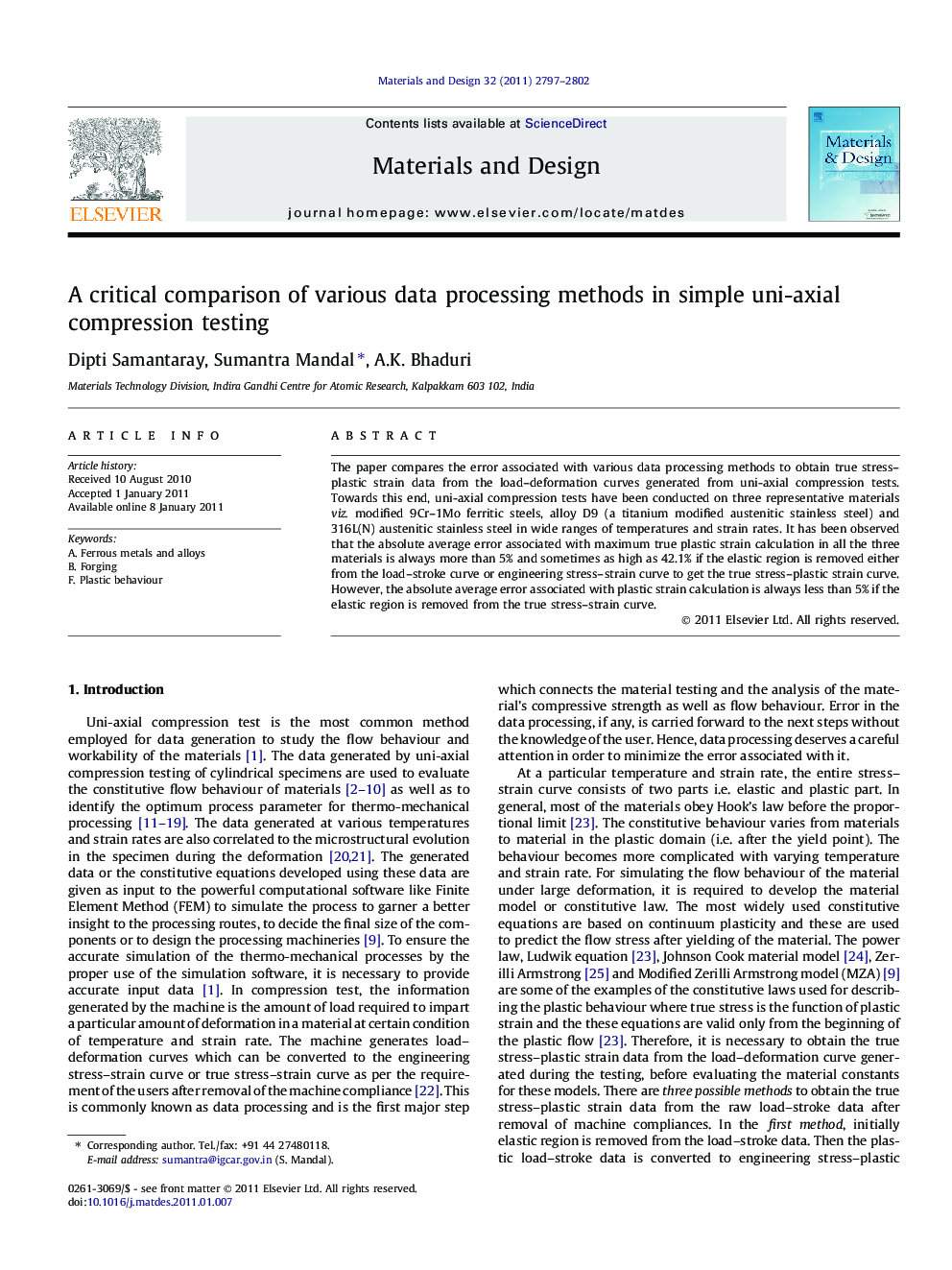| Article ID | Journal | Published Year | Pages | File Type |
|---|---|---|---|---|
| 831287 | Materials & Design (1980-2015) | 2011 | 6 Pages |
The paper compares the error associated with various data processing methods to obtain true stress–plastic strain data from the load–deformation curves generated from uni-axial compression tests. Towards this end, uni-axial compression tests have been conducted on three representative materials viz. modified 9Cr–1Mo ferritic steels, alloy D9 (a titanium modified austenitic stainless steel) and 316L(N) austenitic stainless steel in wide ranges of temperatures and strain rates. It has been observed that the absolute average error associated with maximum true plastic strain calculation in all the three materials is always more than 5% and sometimes as high as 42.1% if the elastic region is removed either from the load–stroke curve or engineering stress–strain curve to get the true stress–plastic strain curve. However, the absolute average error associated with plastic strain calculation is always less than 5% if the elastic region is removed from the true stress–strain curve.
Research highlights► Error in true stress–plastic strain data from load–deformation curve is compared. ► Uni-axial compression tests was conducted on modified 9Cr–1Mo, alloy D9 and 316L(N). ► Error is always more than 5% if elastic region is removed from load–stroke curve. ► Error is similar if elastic region is removed from engineering stress–strain curve. ► Error is less than 5% if elastic region is removed from true stress–strain curve.
